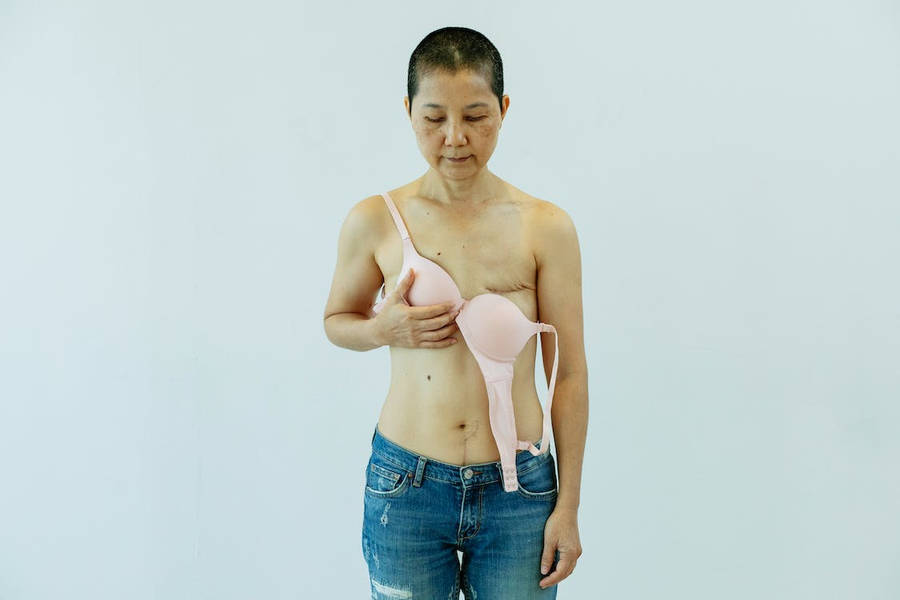Women's Health. A Grow value: Despite its obvious success of medical discovery which involves information, statistics, questions, tests, and treatment there is still growing on uneasiness about breast cancer to keep experts digging to a permanent cure to stop this unwanted killer that primarily effect women.
Breast cancer is the leading cause of cancer deaths in women who are 40 to 55 years old. The good news is that breast cancer can often be highly treatable if it is detected early. There are three methods of early detection:
- Mammography
- Clinical breast examination
- Breast self-examination.
MEDICAL RISK AND FACTOR
One of the most important risk factors for breasts cancer is age. Whether your cancer is diagnosed during a routine medical examination or during a visit to your doctor because of symptoms the risk goes up significantly after 50; Women younger than 50 are at relatively low risk for breast cancer. However, if your mother or a sister has breast cancer before menopause, talk your doctor about starting mammography and other screenings before age 40.
WHAT IS A MAMMOGRAPHY?
A mammogram is a breast X-ray that can reveal breast tumors that are too small to be detected by breast self-exam or a clinical breast examination. Lesions too tiny to produce symptoms can also be detected. Mammography is performed without the use of a contrast medium. Doctors recommend that mammography should not be considered a substitute for breast biopsy, but it is an effective device for differential diagnosis in fibrocystic disease.
Studies have shown that mammograms save lives. In women over 50, mammograms reduce breast cancer death rate by up 1/3. The outcomes of studies for women younger than 50 are less clear. As you learn about your possibility, you will probably discover that there is more than one reasonable treatment option available to you to do mammography as soon as possible. The following is a schedule that a doctor may recommend for a woman like you who is not at high risk for breast cancer:
- Younger than 40. Mammograms not usually done.
- Age 40 to 50. Offer mammograms every 1 to 2 years depending on a schedule agreed upon by the woman and her doctor.
- Over 50. Mammograms every 1 to 2 years.
Note: Mammograms are recommended for any woman who has had cancer in one breast. If you have a female relative who had breast cancer before menopause, talk to your doctor about when to start and how often to have mammograms.
Preparing for a Mammogram
- Arrange to have your mammogram 1 to 2 weeks after your period ends.
- Do not wear deodorant, perfume, perfect, etc., because they can affect the quality of the X-ray.
- Wear clothing that allows you to easily undress from the waist up.
CLINICAL BREAST EXAMINATION
During a clinical breast examination is consisted that a doctor or nurse looks at your breasts and gently feels them for lumps or other unusual changes. The doctor or nurse can also teach you how to examine your breasts yourself.
BREAST SELF-EXAMINATION
Most women's breast tissue has some lumps or thickening; but if you doubt about a particular lump, you may check the other breast. If you find a similar lump in the same area on the other breast, both breasts are probably normal. Be aware for lumps that feel much harder than the rest of the breast. If you are still concerned during this or other examination, please you do not wait and seek health professional.
Establish a regular time to examine your breasts. A few days after your period when your breasts are not swollen or tender are a good time. Note: Women who DO NOT menstruate (after menopause and hysterectomies) can examine their breasts anytime.
In the shower: Raise one arm. With fingers flat, touch every part of each breast, gently feeling for a lump or thickening. Use your right hand to examine your left breast, your left hand for your right breast.
Before a mirror: With arms at your sides, then with arms raised above your head, look carefully for changes in the size, shape, and contour of each breast. Look for puckering, dimpling, or changes in skin texture. Gently squeeze both nipples and look for discharge.
Lying down: Place a towel or pillow under your right shoulder and your hand behind your head. Examine your right breast with your left hand.
Note: This self-exam is not a substitute for periodic examination by a qualified physician.
Now that we've introduced some general ideas, you can prevent it and can have a wonderful life ahead of you.
Selected (Books) References
Coleman, N.C. Understanding Cancer. A Patient's Guide to Diagnosis, Prognosis, and Treatment. The Johns Hopkins University Press, 1998
Bonewit, K. Clinical Procedures for Medical Assistants, 3rd ed., Philadelphia, W.B Saunders Co. 1990.
Lane, K. Sounders Manuel For Medical Assisting, Jarretville, MD, Education Management Resources, 1992
Online
www.cancer.gov
The National Institutes of Health's National Cancer Institute.


